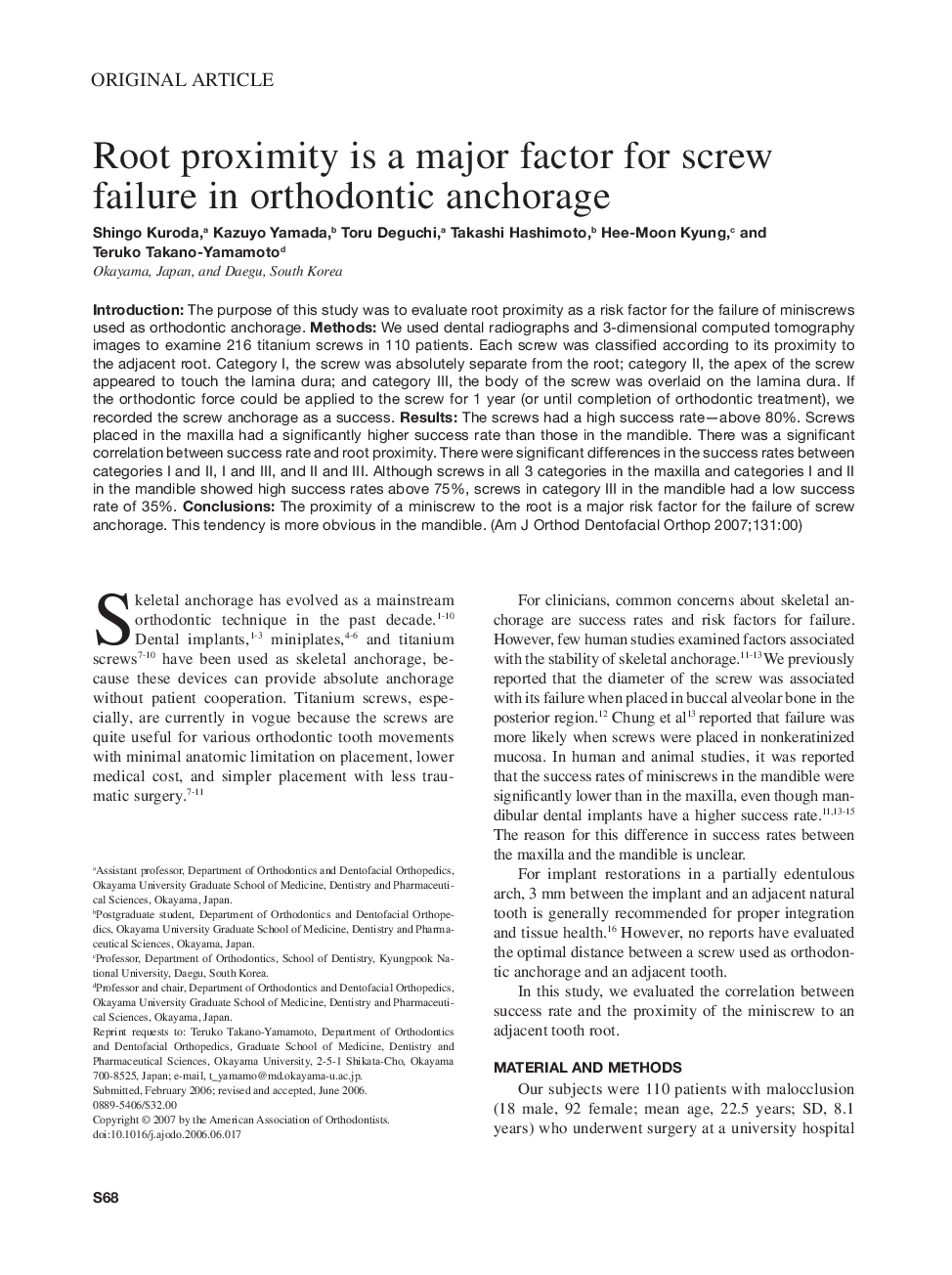| Article ID | Journal | Published Year | Pages | File Type |
|---|---|---|---|---|
| 3119597 | American Journal of Orthodontics and Dentofacial Orthopedics | 2007 | 6 Pages |
IntroductionThe purpose of this study was to evaluate root proximity as a risk factor for the failure of miniscrews used as orthodontic anchorage.MethodsWe used dental radiographs and 3-dimensional computed tomography images to examine 216 titanium screws in 110 patients. Each screw was classified according to its proximity to the adjacent root. Category I, the screw was absolutely separate from the root; category II, the apex of the screw appeared to touch the lamina dura; and category III, the body of the screw was overlaid on the lamina dura. If the orthodontic force could be applied to the screw for 1 year (or until completion of orthodontic treatment), we recorded the screw anchorage as a success.ResultsThe screws had a high success rate—above 80%. Screws placed in the maxilla had a significantly higher success rate than those in the mandible. There was a significant correlation between success rate and root proximity. There were significant differences in the success rates between categories I and II, I and III, and II and III. Although screws in all 3 categories in the maxilla and categories I and II in the mandible showed high success rates above 75%, screws in category III in the mandible had a low success rate of 35%.ConclusionsThe proximity of a miniscrew to the root is a major risk factor for the failure of screw anchorage. This tendency is more obvious in the mandible.
